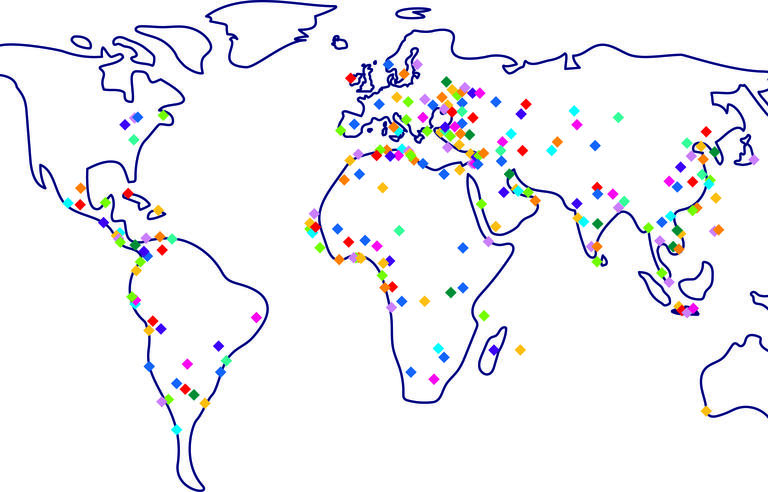
Major trends in student mobility in continental Europe
What are the main trends of student mobility in continental Europe countries? How did the war in Ukraine affected these mobilities and university cooperation? Who are the students in this area coming to France for their studies? The latest Campus France keynote analyses key figures and presents international mobility in these countries.

Qu’est-ce que l’Europe continentale ?
Dans cette note sont regroupés sous la dénomination de pays d’Europe continentale 19 pays situés à l’est de l’Europe. Ils peuvent être regroupés en quatre sous-ensembles : l’Asie centrale (Kazakhstan, Kirghizstan, Ouzbékistan, Tadjikistan, Turkménistan), les Balkans occidentaux (Albanie, Bosnie Herzégovine, Kosovo, Macédoine du Nord, Monténégro, Serbie), le Caucase (Arménie, Azerbaïdjan, Géorgie) et enfin les autres pays (Biélorussie, Moldavie, Russie, Ukraine et Turquie).
Les chiffres clés de la mobilité en Europe continentale
- 669 000 étudiants sont en mobilité diplômante depuis l’Europe continentale en 2021, soit 10% des effectifs en mobilité dans le monde.
- 93% des étudiants de la région qui partent en mobilité restent en Europe (62% vers l’Europe hors UE et 31% vers l’UE).
- La mobilité de ces étudiants a augmenté de 20% en cinq ans soit un rythme légèrement plus lent que la croissance mondiale des mobilités (25%).
- La Russie est leur première destination, accueillant 30% des étudiants de la région.
- Les Ouzbeks forment le contingent le plus mobile de la région, avec une augmentation fulgurante de la mobilité sortante depuis le pays (+164% en trois ans).
- La France accueille 22 380 étudiants originaires de la région en 2022-2023. Cela représente 6% des effectifs d’étudiants étrangers dans le pays.
- 2/3 des étudiants originaires d’Europe continentale en France sont des femmes.
- Près de 3/4 (73%) des étudiants originaires d’Europe occidentale inscrits en France le sont à l’université, une part bien supérieure à la moyenne des étudiants étrangers en France (64%).
- 2/3 des étudiants d’Europe continentale inscrits à l’université le sont au niveau licence soit plus que la moyenne des étudiants étrangers à l’université (52%).
- Parmi les étudiants de la région ayant un emploi, 53% l’ont trouvé en France, 37% dans leur pays d’origine et 10% dans un autre pays.
Cette note dresse le panorama des mobilités des étudiants de ces pays, bousculée par l’irruption de la guerre en Ukraine et son impact sur les coopérations universitaires. Elle détaille la mobilité des étudiants de ces pays vers la France afin d’éclairer sur les formations qui suscitent déjà leur intérêt et celles qui demeurent à mieux faire connaître. Elle s’attache à analyser l’insertion post-diplôme des étudiants de la région, révélant ainsi tout le bénéfice qu’ils et elles retirent de leur formation dans l’hexagone, leur bonne insertion dans le marché du travail français comme étranger ainsi qu’une propension supérieure à la moyenne à rester en France à l’issue de leurs études. Autant d’éléments pouvant être valorisés pour mieux promouvoir la France comme destination d’études.
Recommended News




















































